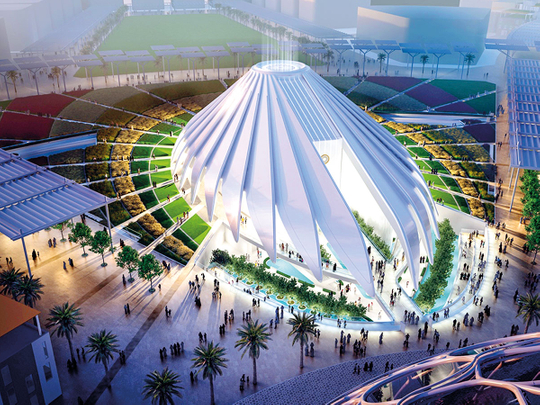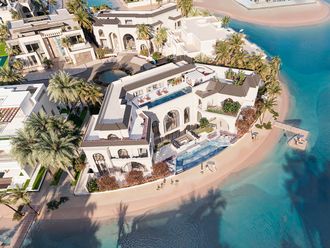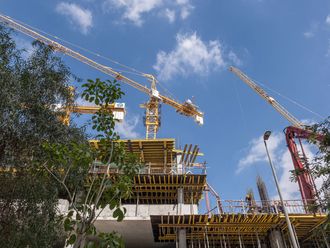
With both the Dubai Creek Tower and the UAE pavilion of Expo2020, the Calatrava brand is now very much a part of UAE’s social fabric, cementing its prestige world over. What have been the guiding principles of your design for this region?
We try to ensure that all our designs are aesthetically and structurally daring, no matter where the project is located. However for this region, we wanted to represent and tell the nation’s story to the world. In the case of both of these projects, we are inspiring unity. The tower is inspired by Islamic architecture and it is a call to bring people together, while the pavilion symbolises the falcon, an obvious reference to UAE’s heritage and its bold and daring spirit.
The landmark tower at Dubai Creek Harbour is influenced by the natural forms of the lily and evokes the shape of a minaret, a distinctive architectural feature in Islamic culture. Was nature your immediate inspiration?
The tower represents combination of elegance and beauty with math and geometry. The design of the tower of Dubai Creek Harbour is rooted in classical art and the culture of Dubai itself. Furthermore, it is also a major technological achievement that we hope the world will be proud of. The project is designed from concrete and steel put together in an artistic manner with the goal of making this space a meeting point for citizens, not only from Dubai and the UAE but all across the world. It is a symbol of belief in humanity and progress.
Has sustainability been a key part of the design?
The Dubai Creek Tower was designed with sustainability and harmony with nature in mind. The very top of the tower will have open garden decks that recreate the wonder of the hanging gardens of Babylon and plant life that can survive high altitudes.
The tower is a beacon of hope that will bring people together. Dubai Creek is already one of Dubai’s most well-known cultural centers and now with the tower at the upcoming Dubai Creek Harbor, visitors will be able to enjoy both the traditional and the modern side of Dubai.
In architecture we also come across the phrase ‘form follows function’. Does the form of the Dubai Creek Tower meet the multi functions of the whole complex of Dubai Creek Harbour?
The Tower is envisioned as the focal point and centre of the entire development. Therefore, it needs to be visible from a majority of locations within the development. The form of the tower allows for great visibility while also attracting people from outside the development. The tower plot will form the centre of Dubai Creek Harbour development and provide space for people to gather. It will be the backbone of the development and a destination for people from all over the world.
How does a building become a landmark?
A building becomes a landmark based on the value it brings to the community and people around it. For example, the Dubai World Trade Centre is so well-known today. It was bold and daring when it was built in 1979 and was once among the tallest towers in the region. The 149-meter tall building was a landmark because it showed the world that Dubai was an economic and financial hub. Similarly, the Burj Al Arab and the Burj Khalifa became iconic buildings and a turning point in Dubai’s history. Most landmark buildings have iconic designs – which is how they are identified and become synonymous with the cities or towns in which they were built.
An iconic building once made, becomes a part of the fabric of the society. How important is it to preserve it and how important should preservation be to a country?
Buildings are like time capsules; they preserve the memories and experience of the people who came before us. It gives us a sense of the heritage of a particular time. This is why the preservation of landmark buildings is of outmost importance to any country that seeks to leave a mark on the future. It is very important to preserve buildings as they are a reflection of the time they were built in and therefore it is important to preserve them as a part of our history and heritage. One of the reasons why people love to visit European countries is because of their historical and architectural diversity. Roman, Gothic and Renaissance styles of architecture all co exit with modern building constructions, so it is like living across centuries.
_resources1_16a08525ffb_original-ratio.jpg)










